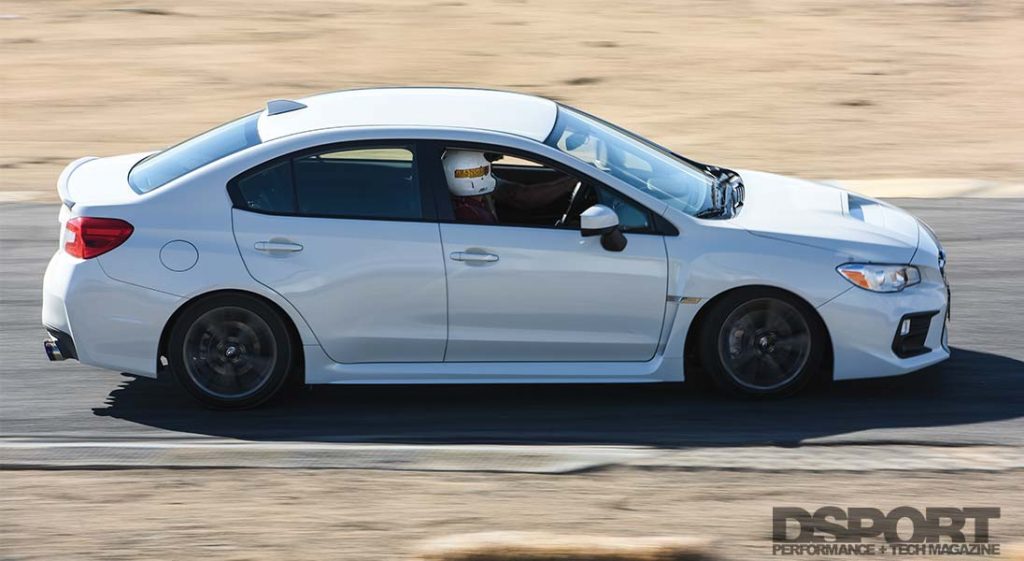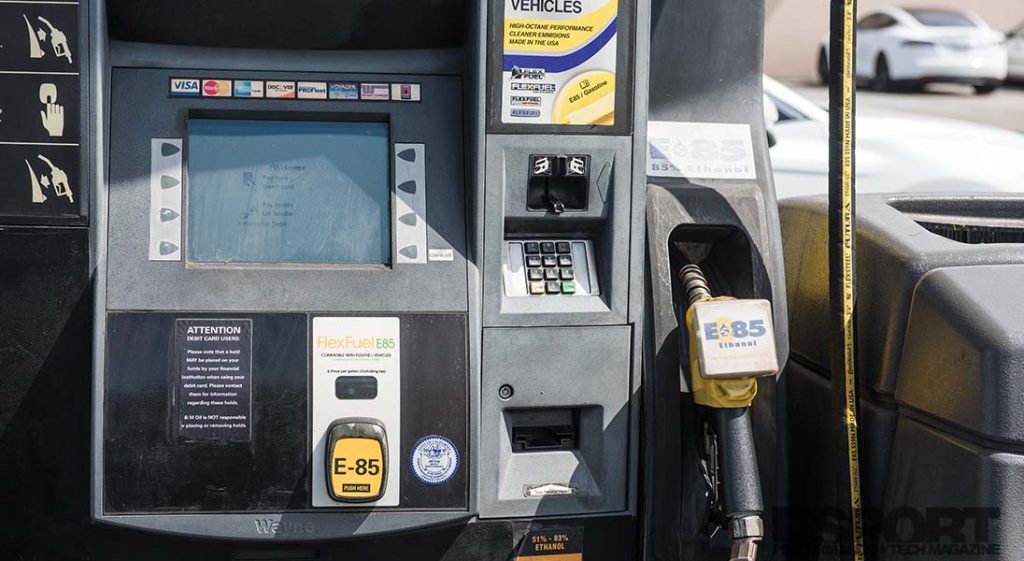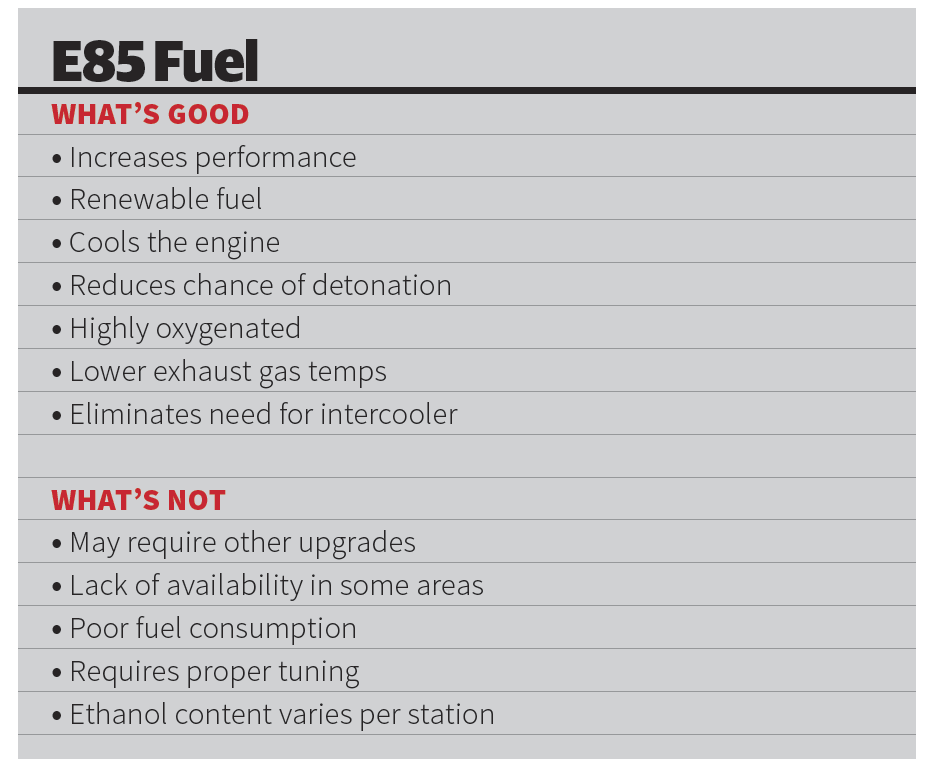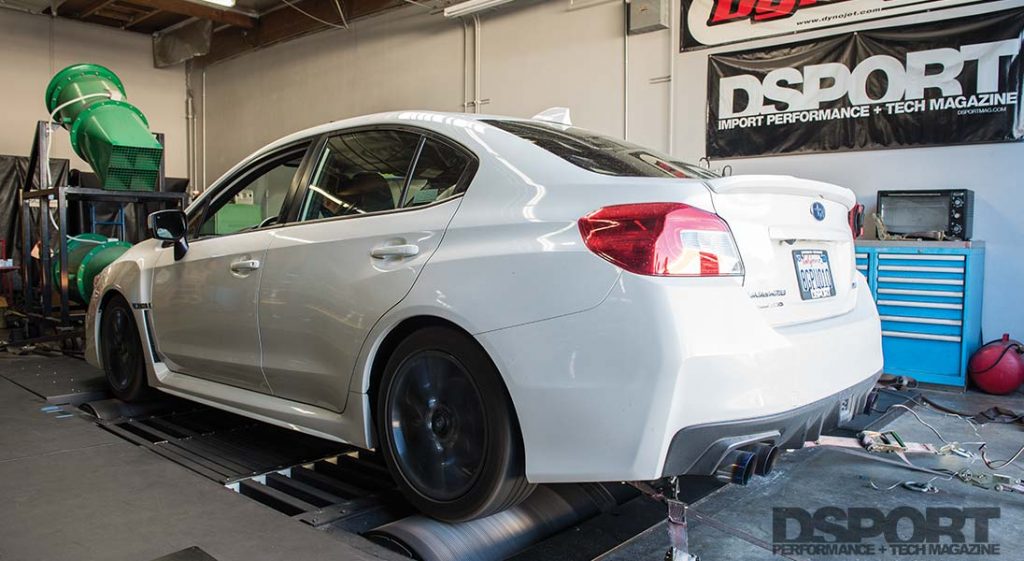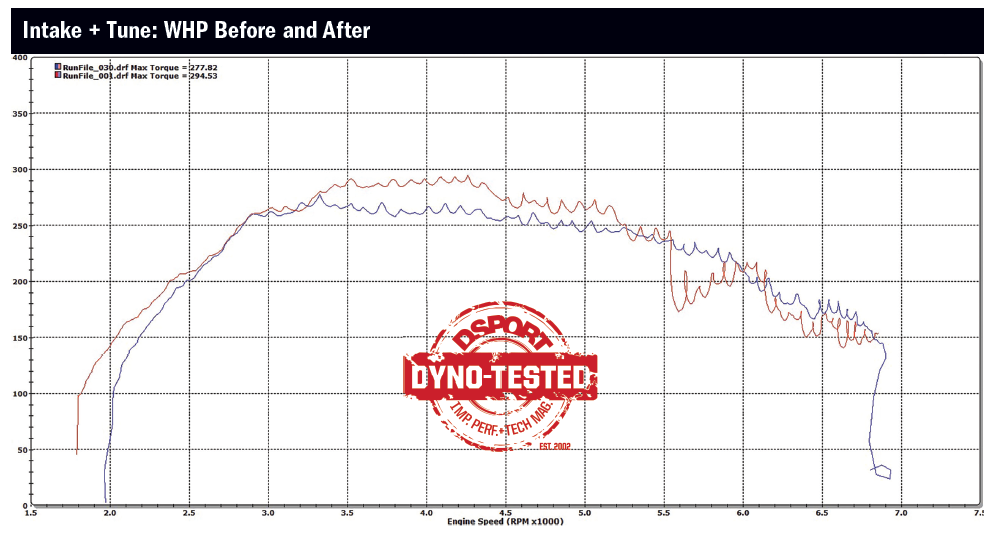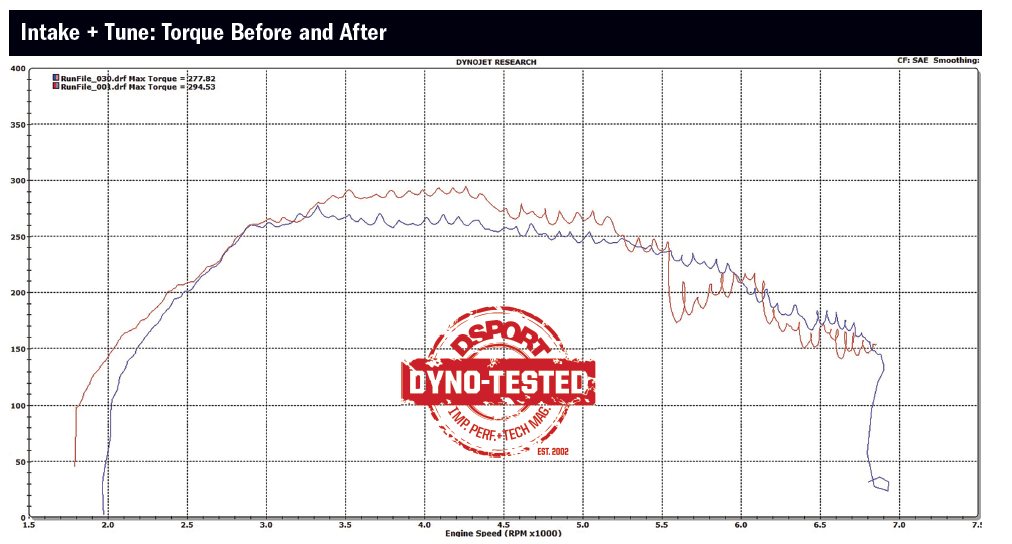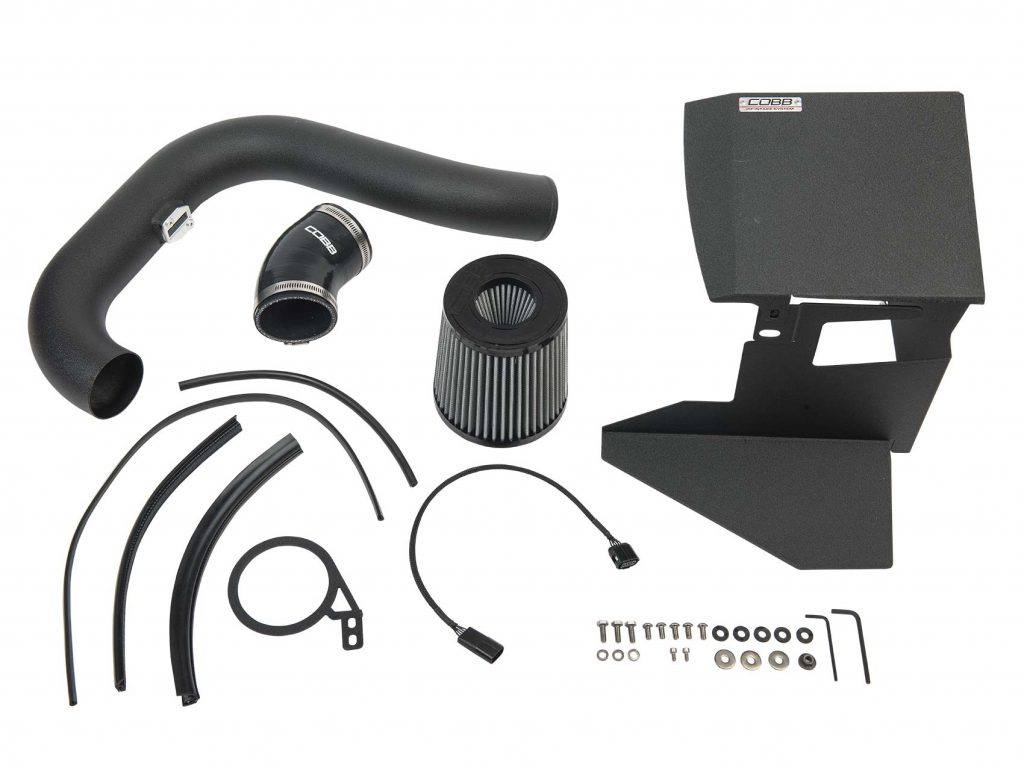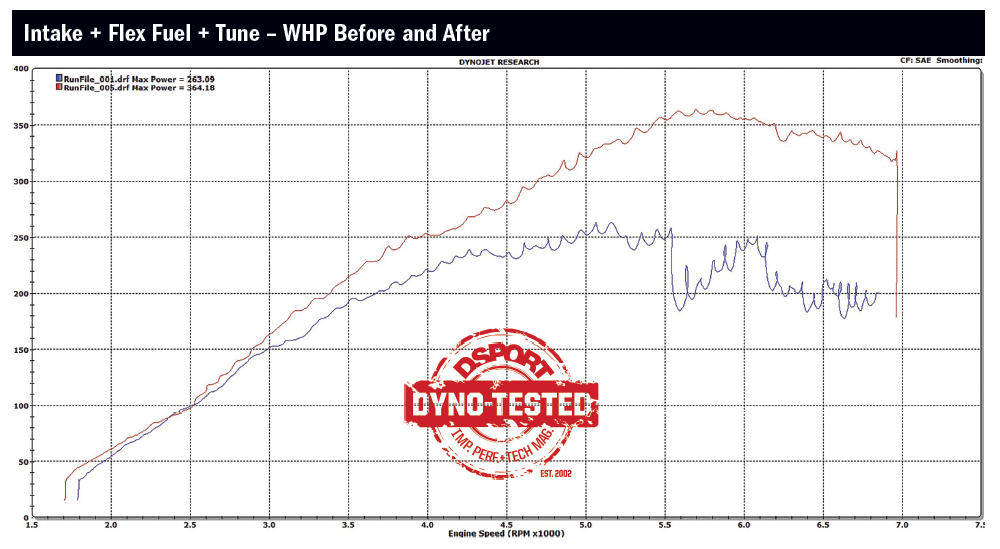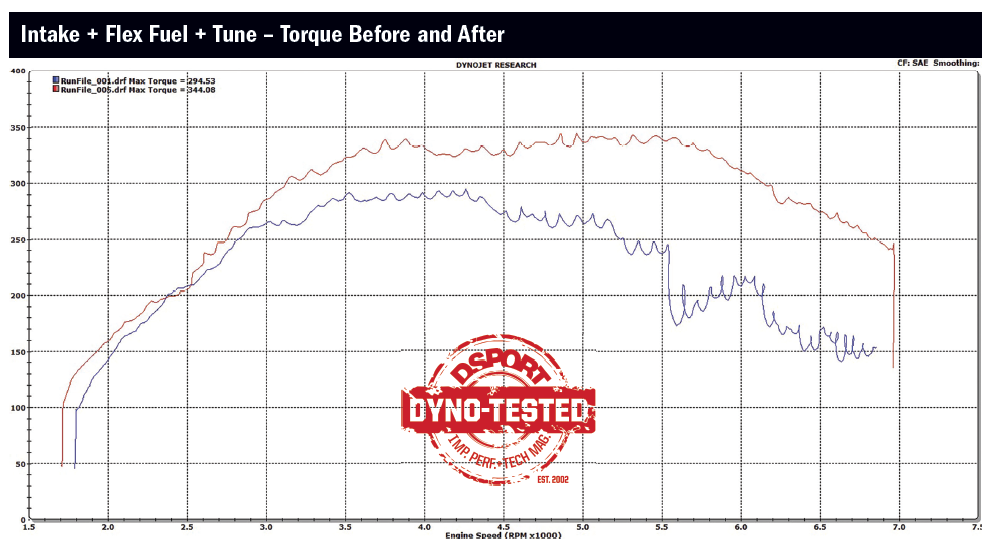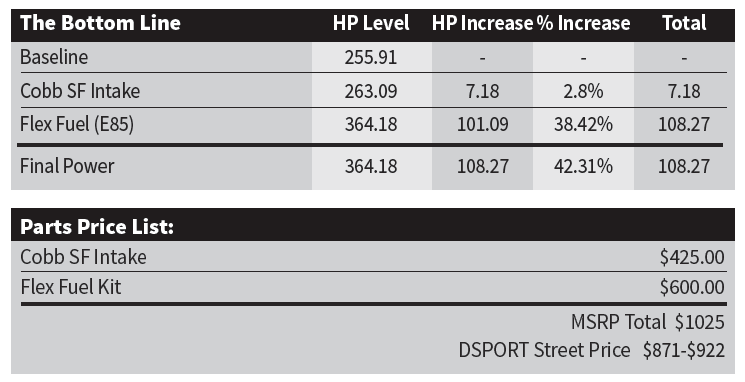What’s your poison? Do you prefer wine or tequila? Both have their place. Wine will make you feel relaxed. Due to its lower alcohol content, wine can deliver an extended range and can be found much easier than its high-alcohol alternative. 91-octane pump gas is the wine of fuel options. In contrast, choosing tequila may not let you go the same distance, but you’ll definitely get there faster. E85 is the tequila of the fuel options. Obviously, we would never advocate drinking and driving (so don’t do it), but if you know the difference between a night of sipping wine and a night of tequila shots, you can relate to the resemblance between 91-octane and E85.
Text by Bassem Girgis // Photos by Joe Singleton
DSPORT Issue #210
Wine: 91-Octane
The octane rating found in pump gas is directly related to knock or detonation. It’s the fuel’s ability to resist knock. Higher octane fuel is used with boosted engines. Since these engines have higher pressure in the cylinders, they extract more mechanical energy from the fuel. The higher octane would help resist pre-detonation. If your engine isn’t boosted (and if it doesn’t require high octane fuel), then running high octane fuel won’t have any performance merits. Like wine, pump gas is available just about anywhere you go, but digging around for a full-bar that serves tequila for your car will have a whole different effect.
Tequila: E85 Fuel
A mixture of 85-percent ethanol and 15-percent gasoline, E85 is considered by many to be a poor-man’s race fuel – and for good reasons. The high percentage of ethanol allows this type of fuel to hold 30-percent of oxygen. Another advantage of the ethanol content in the E85 is that it doesn’t have the corrosive issues you may experience in methanol. E85 can be produced from a wide variety of organic material, making it a renewable fuel. By using this fuel, your engine will burn cleaner, run cooler, while providing high octane and give you a significant horsepower gain.
The Good Times
By incorporating this fuel in your setup, you increase the oxygen while reducing boost to fit the same amount of oxygen into your cylinders. This means you can significantly increase your horsepower while basically running the same boost. While gasoline atomizes in your engine, ethanol vaporizes. By vaporizing, this liquid ends up absorbing a lot of heat in the process. This allows E85 to do most of the work that the intercooler would do to keep the air cool, which means you could save a few dollars on this upgrade. The high ethanol in E85 serves as a resistant to detonation/knock. Finally, E85 is far cheaper per gallon than regular 91 pump gas. Life on E85 isn’t all fun and games. There are a few things that could potentially discourage you from making the switch, the same way tequila could give you a hangover.
The Hangover
We’ve mentioned that E85 is cheaper by the gallon than regular pump gas, but it also hurts your fuel consumption because it contains less energy than regular gasoline. One of the biggest downfalls of running E85 is its availability. While you can get gasoline from just about any gas station, E85 requires some searching around. Some areas might not even have E85 available, leaving you disappointed and out of fuel. As you may have noticed, the disadvantages of E85 are quite minimal, but before racing to the nearest gas station that offers E85, you have to make sure your car is set up for this type of fuel.
The Cobb Flex Fuel sensor kit features an ethanol sensor. When tuned properly, this sensor analyzes ethanol content and is tuned from e0 to e99, allowing you to use any blend of fuel and it will adapt accordingly.
Is Your Car Ready?
Most cars that don’t say “Flex Fuel” on them aren’t set up for E85. In these cases, companies like COBB Tuning offer a flex fuel solution that is extremely simple to install. This is a complete plug-and-play solution that allows you to convert your vehicle to support flex fuel. With this kit installed, you are required to tune your ECU properly. Tuners will create a custom map that allows your car to run anywhere between e0 and e99. The sensor will analyze the ethanol content in your fuel and adjust accordingly. This means that you can go to the pump and use 91-octane, then mix it with E85, run pure E85 alone, or just about any mixture your heart desires.
The flex fuel kit might not be the only requirement for your car. Depending on your fuel system, you may need to upgrade the fuel pump and the fuel injectors if they’re maxed out. When running E85, your engine will require 35-percent more fuel. If your pump and injectors can support that, then you don’t need to upgrade them. If you need to upgrade your fuel system to support 35-percent more, you can simply multiply your current fuel rating by 1.35 (35-percent), and the result will be the fuel rating you need.
Our Testing
Our 2019 Subaru WRX D’GARAGE project will serve as our test bed for the flex fuel conversion. Our turbocharged FA20DIT engine can use some more power, better cooling, and the flexibility of switching between pump gas and E85. We opted for the Cobb Flex Fuel Ethanol Sensor Kit to make this a reality. The kit comes with the billet aluminum converter case, electrical and fuel line connectors, and the ethanol sensor. This kit will run with the help of our Cobb Accessport and tuned by Mike McGinnis, a Senior R&D Calibrator at Cobb Tuning.
263 WHP
294.53 lb-ft of Torque
On the Dyno
 Our 2019 Subaru WRX has received a custom tune by Mike McGinnis along with the REMARK catback exhaust in the previous Test and Tune. Last time it was strapped to the dyno, it put down a peak 256 horsepower and 278 lb-ft of torque to all four wheels. Before pouring the E85 in the tank and tuning the ECU for it, we decided to install the Cobb SF Intake. This intake features a larger diameter MAF housing. This allows us to read more air without the sensor maxing out. With the intake and Mike’s tune to go with it, the WRX put down a peak 263.00whp and 294.53 lb-ft of torque. The intake complemented the raw character of the WRX in terms of sound, but more importantly, it allowed us to run the same boost on E85, but flow a lot more air on the top end. We were able to do that without maxing the MAF sensor, making this the perfect setup for what is to come.
Our 2019 Subaru WRX has received a custom tune by Mike McGinnis along with the REMARK catback exhaust in the previous Test and Tune. Last time it was strapped to the dyno, it put down a peak 256 horsepower and 278 lb-ft of torque to all four wheels. Before pouring the E85 in the tank and tuning the ECU for it, we decided to install the Cobb SF Intake. This intake features a larger diameter MAF housing. This allows us to read more air without the sensor maxing out. With the intake and Mike’s tune to go with it, the WRX put down a peak 263.00whp and 294.53 lb-ft of torque. The intake complemented the raw character of the WRX in terms of sound, but more importantly, it allowed us to run the same boost on E85, but flow a lot more air on the top end. We were able to do that without maxing the MAF sensor, making this the perfect setup for what is to come.
The Cobb SF intake system features a larger diameter MAF sensor housing than the factory’s. This will allow you to read more air without your MAF sensor maxing out. The intake along with a tune provided a peak 7 WHP gain and 16 lb-ft of torque.
Shots, Shots, Shots
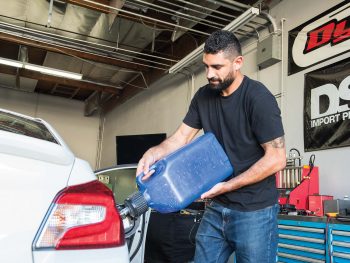 It was finally time to pour the tequila shots into the WRX in the form of E85. Running on the same peak boost, the WRX delivered a peak 364.18whp and 344.08 lb-ft of torque. This is a 101.09 peak whp gain and 49.55 lb-ft of torque increase. The 38-percent increase in peak wheel horsepower and 17-percent increase in peak torque came courtesy of by far the easiest and most effective upgrade you can possibly do before turning to a turbocharger upgrade. The switch to E85 showed a tremendous improvement in both power and torque curves. While the power used to start tapering off and dying out around 5,200 RPM, and well before that in the torque curve (4,500 RPM), this fuel and tune allowed them to continue climbing much further. This allowed for far smoother pulls that are aggressive yet linear.
It was finally time to pour the tequila shots into the WRX in the form of E85. Running on the same peak boost, the WRX delivered a peak 364.18whp and 344.08 lb-ft of torque. This is a 101.09 peak whp gain and 49.55 lb-ft of torque increase. The 38-percent increase in peak wheel horsepower and 17-percent increase in peak torque came courtesy of by far the easiest and most effective upgrade you can possibly do before turning to a turbocharger upgrade. The switch to E85 showed a tremendous improvement in both power and torque curves. While the power used to start tapering off and dying out around 5,200 RPM, and well before that in the torque curve (4,500 RPM), this fuel and tune allowed them to continue climbing much further. This allowed for far smoother pulls that are aggressive yet linear.
364.418 WHP
344.08 lb-ft of Torque
The Bottom Line
Go flex fuel or go home! When we look at the pros and cons of E85, it comes down to availability. However, this issue is easily avoided when running a flex fuel kit instead of a specific E85 tune. With flex fuel, you can use whatever fuel you want or have available, with the option of switching at any point. We gained over 100whp and 50 lb-ft of torque (Mike McGinnis put a cap on torque to ensure reliability), making this upgrade the single most effective one on the car to date. We wanted to try flex fuel before we get into the intercooler, downpipe, etc. to prove that this is simply the way to go. Stay tuned as we continue building the WRX and battle its rival, the Civic Si, on the track in the next issue. Keep an eye out on our YouTube channel for the full interview with Mike McGinnis answering all of your Flex Fuel questions.



